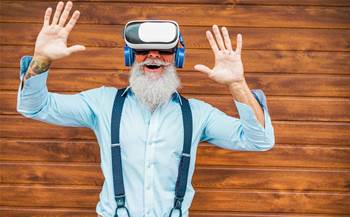The largest global study of virtual reality video games’ use in rehabilitation has found patients have improved mobility at key points in the recovery journey.
A study of 300 participants ranging from 18 to 101 years old across three hospitals in Sydney and Adelaide looked at how using an average of four digital devices combined with exercise affect the rehabilitation process.
In a paper published today in the journal PLOS Medicine, the researchers said that the study was performed to see how digital technologies could overcome the fact that higher doses of therapy are known to support better health outcomes but, in current practice, patients typically receive comparatively lower doses of therapy.
And while many had theorised that digital devices could make rehabilitation more accessible and user friendly, there hasn’t been enough clinical data to support those claims across the broad range of devices on offer.
What studies there have been so far having only had small trial sizes or haven’t tailored the digital devices on offer to a patient’s mobility issues, preferences or
Fitbits were the most common devices for participants to use, with some also using gaming platforms like Xbox, Wii and iPads and virtual reality activities to make their exercises more interactive and gain real-time feedback from the game.
“These benefits meant patients were more likely to continue their therapy when and where it suited them, with the assistance of digital health care,” said lead author Dr Leanne Hassett from the University of Sydney’s Faculty of Medicine and Health.
Participants showed the most progress during the first three weeks of the trial when under closer supervision by physiotherapists.
However, the accessibility and gamification factors meant they were more also more likely to have improved outcomes at the 6 month mark, even if the progressed had slowed compared to in-hospital levels.
“Participants loved Fitbits; one woman would demand to put it on in the middle of the night before she went to the toilet, to make sure all her steps were counted,” she added.
“This model of rehabilitation therapy proved to be feasible and enjoyable, and demonstrated that it could be used across different care settings, such as post-hospital rehabilitation, with mostly remote support by the physiotherapist.
“The study shows that future physical rehabilitation models should look at including digital devices to improve both inpatient and post-hospital rehabilitation.”


.png&h=140&w=231&c=1&s=0)


.jpg&h=140&w=231&c=1&s=0)




















